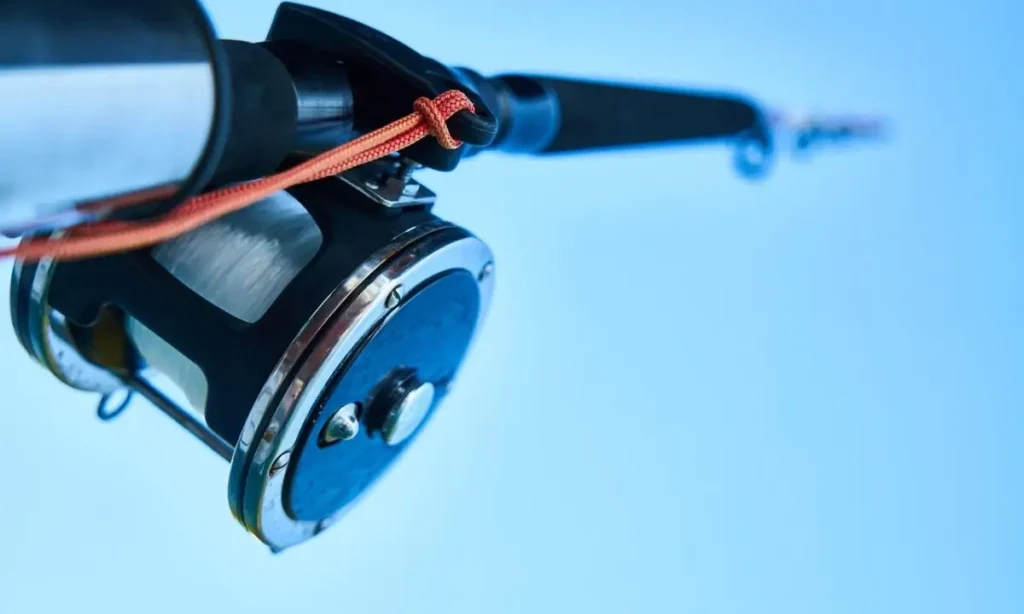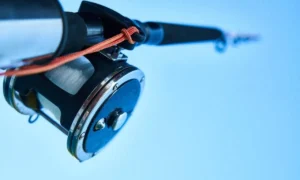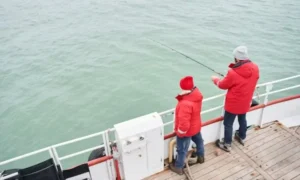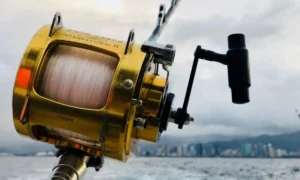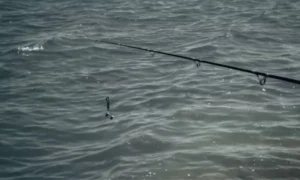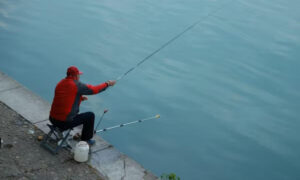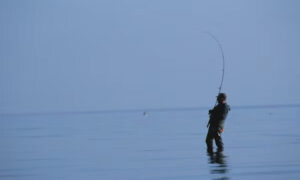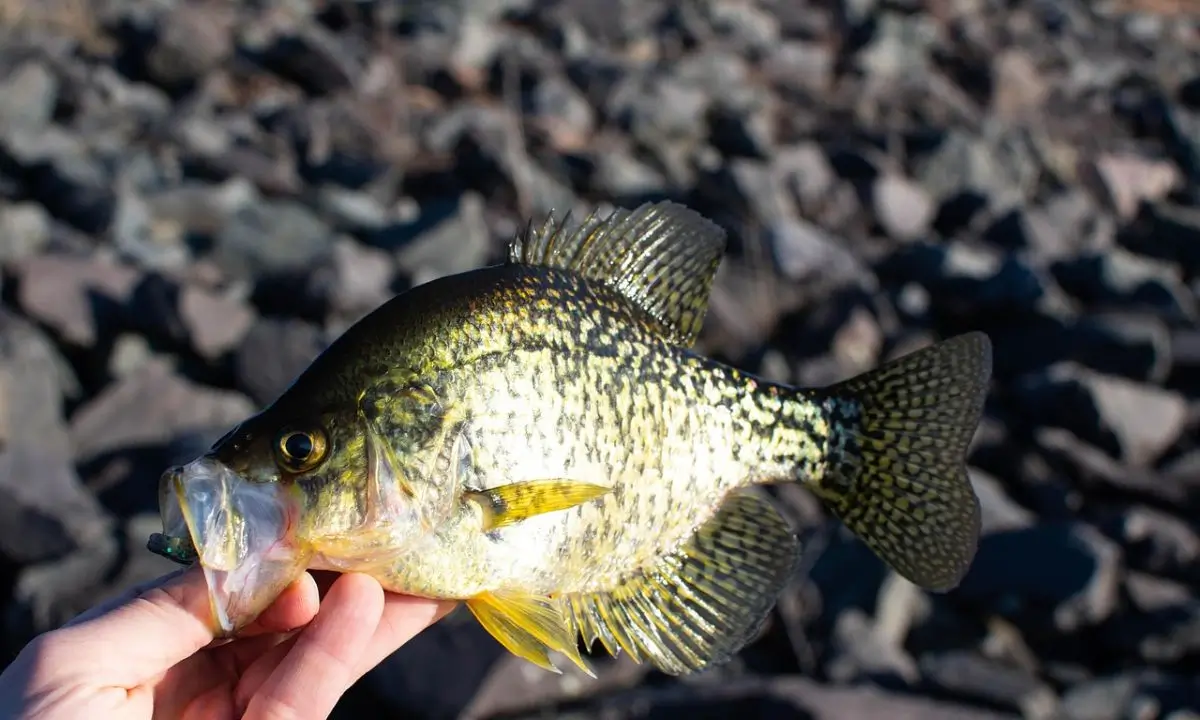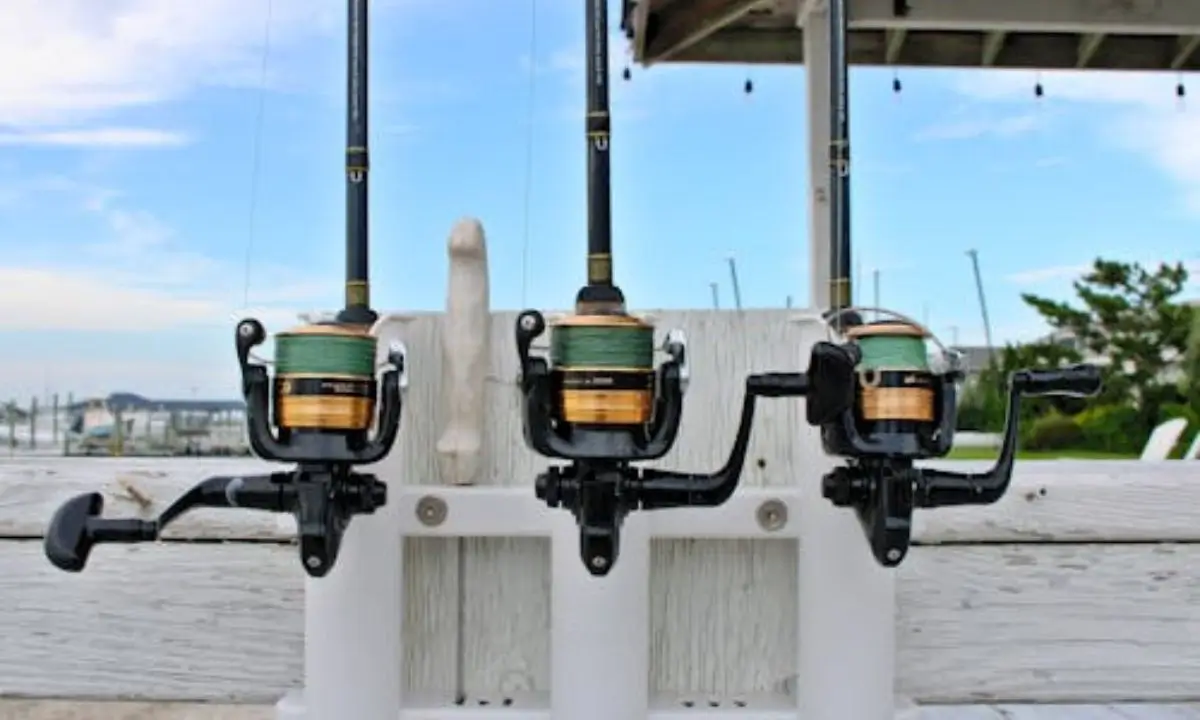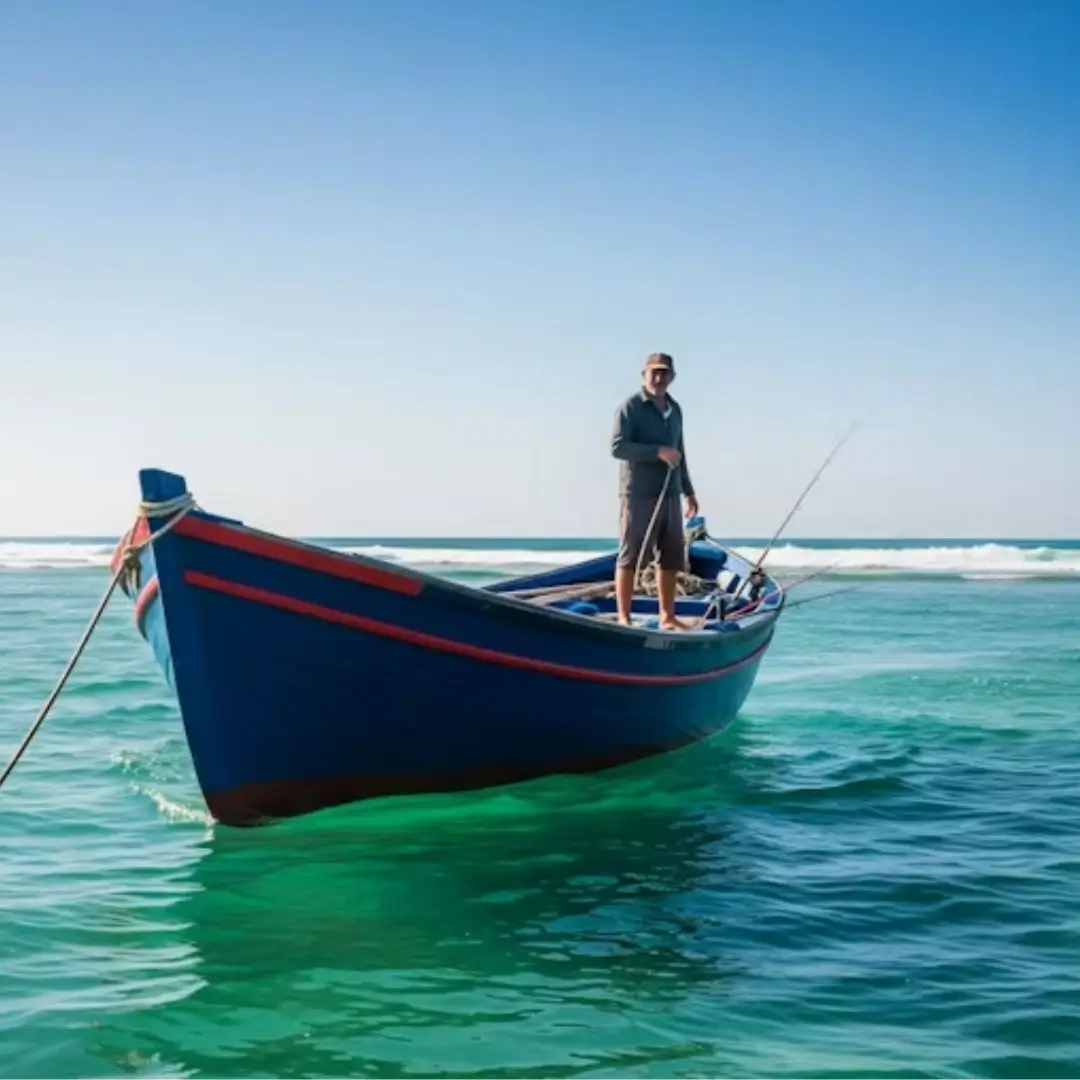Fishing line typically lasts 1–3 years for monofilament, 4–7 years for fluorocarbon, and 5+ years for braided lines. Lifespan depends on usage, storage, and water conditions. Regular inspection helps decide when replacement is needed.
Introduction
How Long Does Fishing Line Last?
Choosing the right fishing gear is important, but knowing how long the fishing line lasts is just as critical for every angler. Over time, the line weakens from sunlight, water exposure, and regular use, which can reduce casting accuracy and increase breakage risks. In 2025, new fishing line materials and protective coatings are helping anglers extend durability, but proper care still makes the biggest difference.
Whether you use a fishing rod for casual weekend trips or professional tournaments, replacing line at the right time ensures better performance and fewer missed catches. In this complete guide, we’ll explore lifespan tips, fishing line types, and expert fishing rod tips to help you maintain strong, reliable gear for every trip. details Top 10 Fishing Rod Tips
How Long Does a Fishing Line Last?
The most common question anglers ask is: “How long does a fishing line last?” The outcome varies based on the type, how it’s stored, and how often it’s used.
- Monofilament fishing line → lasts 6–12 months on a reel if used regularly. If kept in storage under proper conditions, it may last 1–2 years.
- Fluorocarbon fishing line → lasts 1–2 years on a reel and up to 2–3 years in storage.
Braided fishing line → the most durable, lasting 3–5 years on a reel and even longer in storage if not frayed. - 👉 So, if you fish every weekend, you should replace your mono line yearly, fluorocarbon every 1–2 seasons, and braid every 2–3 years.
Factors That Affect Fishing Line Lifespan
Knowing how long a fishing line lasts depends on more than just the material—it’s also about how you use and store it. Several key factors can shorten or extend the lifespan of your fishing line, and understanding these will save you from sudden breakage and missed catches.
☑ UV Exposure: Direct sunlight weakens line fibers, especially monofilament. Anglers who often fish during bright days should replace line more frequently.
☑ Water Type: Saltwater is harsher on fishing gear compared to freshwater. Salt particles break down line coating faster, reducing durability.
☑ Frequency of Use: If you fish weekly, your line faces more stress, stretching, and knot pressure than if you only fish once a month.
☑ Storage Conditions: Heat and humidity can damage spooled line even if unused. Proper storage in a cool, dark place keeps the line stronger for longer.
☑ Fishing Rod & Reel Setup: Using the right rod and reel reduces friction and improves line management, which directly affects how long fishing line lasts.
By checking these factors regularly, you can extend your fishing line’s lifespan and enjoy smoother casting with your fishing rod. Fishing Reel Gear Ratios Guide
How Long Does Monofilament Fishing Line Last in Storage?
Monofilament is the weakest when it comes to long-term storage. Even if unused, it degrades in 1–2 years due to UV light, humidity, and temperature changes.
- Stored indoors in a cool, dark drawer → lasts up to 2 years.
- Stored in a hot garage or car → may weaken in 6–12 months.
💡 Tip: Always check for stretch, strength, and smoothness before re-spooling old mono line.
How Long Different Types of Fishing Line Last
Every angler eventually asks the same question: how long does fishing line last? The truth is, lifespan depends not only on the type of line but also on fishing gear setup and storage conditions. Below is a breakdown of the three most common fishing lines and what you can expect from each.
☑ Monofilament Line
Monofilament is budget-friendly and easy to handle, which makes it popular among beginners. However, it absorbs water, stretches, and weakens faster under UV light. On average, monofilament lasts 1–3 years with regular use. If stored in a cool, dark place and spooled carefully on your fishing rod, it may last closer to the 3-year mark.
☑ Fluorocarbon Line
Fluorocarbon is tougher and more resistant to sunlight compared to monofilament. It’s nearly invisible underwater, which makes it great for clear water fishing. Typically, fluorocarbon lasts 4–7 years if properly stored. But once it begins to show stiffness or knot slipping, replacement is recommended.
☑ Braided Line
Braided fishing line is the strongest and most durable option. It doesn’t easily degrade under sunlight and handles heavy drag well. Many anglers report using the same braided line for 5+ years, especially when paired with the right fishing rod tips and reel care. Still, it should be checked regularly for frays. details Storing Fishing Rods
📊 Comparison Table (for extra value & SEO)
| Fishing Line Type | Average Lifespan | Key Strengths | Weaknesses |
| Monofilament | 1–3 years | Cheap, easy to use | Weakens under UV, absorbs water |
| Fluorocarbon | 4–7 years | Nearly invisible, UV resistant | Can become stiff over time |
| Braided | 5+ years | Very strong, durable | Can fray, more expensive |
Shelf Life vs In-Use Life of Fishing Line
When asking how long does fishing line lasts, it’s important to separate shelf life from in-use life. Many anglers buy extra spools of line and keep them stored with other fishing gear, but storage quality directly affects durability.
☑ Shelf Life:
If kept in a cool, dry, and dark place, unused monofilament or fluorocarbon line can last 5–7 years without major strength loss. A braided line can last even longer because it’s less sensitive to UV damage. However, storing line in direct sunlight, heat, or humid conditions can cut its lifespan in half.
☑ In-Use Life:
Once line is spooled onto your fishing rod and exposed to water, UV rays, and casting stress, the fishing line lifespan drops significantly. Monofilament may need replacement every season, fluorocarbon every 2–3 years, and braided line every 4–5 years depending on use.
By checking storage conditions and monitoring your fishing rod setup, you can maximize both shelf life and in-use durability, ensuring stronger performance on every trip.
Testing Fishing Line for Damage
No matter the type, every angler wonders how long does fishing line last once it’s been used for a while. The best way to judge is by testing your line for signs of wear. Simple checks can help you avoid sudden breakage and lost catches.
☑ Knot Pull Test
Tie a knot on your fishing rod setup and give it a firm pull. If the knot slips or the line snaps too easily, the lifespan has already weakened.
☑ Stretch Test
Hold a short section of line between both hands and stretch gently. A healthy line should return to its shape. If it feels brittle, rough, or fails to recover, it’s time to replace it.
☑ Visual Inspection
Look closely at the line for frays, cuts, or color fading. Damaged sections usually show signs near the rod tip or where the line rubs against guides.
Regular testing keeps your fishing gear reliable and ensures your fishing rod tips perform at their best. Checking early helps you extend durability and avoid losing fish at critical moments.
How Long Does Fluorocarbon Fishing Line Last in Storage?
Fluorocarbon offers greater resistance than monofilament since it has higher density and takes in less water.
- In storage with proper care → lasts 2–3 years.
- On a reel exposed to sunlight → usually lasts 1–2 years.
👉 Many anglers report that fluorocarbon can remain strong even after several seasons, but it’s always smart to test before relying on it. details Catch Boundary Braided Line
How much time can a braided fishing line remain usable when kept in storage?
Braided line is the most durable type, crafted from synthetic materials such as Spectra or Dyneme.
- In storage → lasts 5+ years if not exposed to UV or moisture.
- On a reel → lasts 3–5 years, but it may fray at stress points.
👉 Some anglers even claim braid stored in a sealed package can last a decade without issues.
How to Extend the Life of Fishing Line
Every angler wants to know not only how long does fishing line last but also how to make it last longer. The good news is, with proper care and fishing gear maintenance, you can extend the fishing line lifespan and enjoy smoother, more reliable trips.
☑ Clean After Every Trip
Salt, dirt, and debris weaken the line over time. Rinse your fishing rod, reel, and line with fresh water after each use, especially if you fish in saltwater.
☑ Store in a Cool, Dark Place
Heat and UV rays are the biggest enemies of fishing line durability. Keep spare spools in a tackle box or drawer away from sunlight.
☑ Avoid Overloading the Reel
Spooling too much line on your reel creates friction and tangles. Follow proper fishing rod tips for re-spooling to reduce stress.
☑ Use Line Conditioner or Protectant
Sprays designed for fishing gear help reduce memory, prevent dryness, and add flexibility to the line.
☑ Regularly Re-Spool
Even with good care, replace monofilament every season, fluorocarbon every 2–3 years, and braided line every 4–5 years to ensure top performance.
By following these simple steps, you can increase durability, save money on frequent replacements, and keep your fishing rod performing at its best.
How Long Does Fishing Line Last Unused (On the Shelf or in Package)?
Many beginners wonder: “Does fishing line go bad if not used?”
- On the shelf (in the original package) → mono lasts 1–2 years, flour lasts 2–3 years, braid lasts 5 years or more.
- In the garage → extreme heat shortens life drastically (mono may last only 6 months).
- If left unused on a reel, monofilament typically lasts about 1 year, fluorocarbon around 2 years, and braid 3 to 5 years. Detailed description fishing rod and reel combo
How much time can a fishing line remain effective when exposed to sunlight?
The primary enemy of fishing line is direct sunlight, especially UV radiation
- Monofilament → can lose 50% of strength in a single summer if left exposed.
- Fluorocarbon → more resistant but still weakens over time.
- Braid → UV resistant but still breaks down faster when constantly in sunlight.
👉 Make sure reels are stored inside or kept covered whenever they’re not being used. Known Details Pontoon Boat
How to Test If Fishing Line Is Still Good?
Here’s how to check whether your line is safe:
- Knot Test → Tie a knot and pull. If it slips or breaks easily, replace the line.
- Stretch Test → Pull a few feet of line. If it feels stiff, brittle, or doesn’t stretch smoothly, it’s bad.
- Visual Test → Look for discoloration, frays, or cloudy appearance.
Finger Test → Run your fingers along the line. If you feel rough spots, cut it off.
How to Extend the Life of Fishing Line
Every angler wants to know not only how long does fishing line last but also how to make it last longer. The good news is, with proper care and fishing gear maintenance, you can extend the fishing line lifespan and enjoy smoother, more reliable trips.
☑ Clean After Every Trip
Salt, dirt, and debris weaken the line over time. Rinse your fishing rod, reel, and line with fresh water after each use, especially if you fish in saltwater.
☑ Store in a Cool, Dark Place
Heat and UV rays are the biggest enemies of fishing line durability. Keep spare spools in a tackle box or drawer away from sunlight.
☑ Avoid Overloading the Reel
Spooling too much line on your reel creates friction and tangles. Follow proper fishing rod tips for re-spooling to reduce stress.
☑ Use Line Conditioner or Protectant
Sprays designed for fishing gear help reduce memory, prevent dryness, and add flexibility to the line.
☑ Regularly Re-Spool
Even with good care, replace monofilament every season, fluorocarbon every 2–3 years, and braided line every 4–5 years to ensure top performance.
By following these simple steps, you can increase durability, save money on frequent replacements, and keep your fishing rod performing at its best.
Is a 20-Year-Old Monofilament Fishing Line Still Good?
The short answer: No. Even if it looks fine, 20-year-old monofilament is unsafe to use. Plastic materials degrade over time, losing strength and elasticity.
👉 A line this old is only good for practice casting or craft projects, not fishing.
How Long Does Fishing Line Take to Decompose?
Fishing line is made of synthetic polymers like nylon, which are not biodegradable.
- Monofilament & Fluorocarbon → take 500+ years to decompose in nature.
- Braided line → also lasts centuries without breaking down.
👉 That’s why it’s critical to recycle old line at collection points or dispose of it responsibly.
Quick Note: How Long Is the Fishing Line?
Fishing lines are usually sold in spools of 100–1000 yards, but the length you need depends on:
- Freshwater reels → 100–200 yards.
- Saltwater reels → 300–600 yards or more.
👉 What matters more than “how long” is the frequency of replacing and checking it. details Fly Fishing Expo Denver
Real Angler Insights & Best Practices for Fishing Line Lifespan
How Long Does Fishing Line Last: (Real Angle)?
If you search “how long does fishing line last Reddit”, you’ll see hundreds of anglers debating this. Most agree on a few key points:
- Monofilament → replace every season, especially if exposed to sunlight and saltwater.
- Fluorocarbon → can last 2+ seasons, but some anglers replace it yearly for peace of mind.
- Braided line → many Reddit users reported using the same braid for 5 years, only trimming frayed sections.
👉 Key takeaway from real anglers: the environment you fish in matters more than the manufacturer’s claim. Saltwater and direct sun cut lifespan in half, while careful storage extends it.
How Long Does Fishing Line Last on a Reel?
The reel plays a huge role. When a fishing line stays spooled tightly for months, it experiences line memory (curling).
- Monofilament usually holds up for 6–12 months on a reel before UV exposure and line memory weaken it.
- Fluorocarbon → survives 1–2 years, but memory can still be an issue.
- Braided line → has almost zero memory and can last 3–5 years spooled.
💡 Pro Tip: If you don’t fish often, remove the line from the reel and store it in a zip-lock bag indoors.
How Long Does Fishing Line Last in Garage or Outdoors?
Many anglers keep gear in the garage — but that’s not ideal.
- High heat + humidity → accelerates breakdown.
- Garage-stored mono may weaken in 6 months.
- Fluoro & braid last longer but still degrade twice as fast in extreme temps.
👉 Best practice: Always store extra spools in a cool, dark, climate-controlled room, not in your car or shed.
How Long Does Fishing Line Last in Storage vs Package?
There’s a big difference between stored line (opened) and sealed line in package.
- Unopened (factory sealed package):
- Mono: up to 2 years.
- Fluoro: 3 years.
- Braid: 5+ years.
- Opened storage spool (after some use):
- Mono: 1 year.
- Fluoro: 1–2 years.
- Braid: 3 years.
👉 Once you break the seal, oxygen and light begin degrading the line. details Fishing Reel Gear
How Long Does Fishing Line Last on the Shelf (Unused)?
This is one of the most common PAA queries.
- Unused monofilament sitting on a tackle shop shelf may last 1–2 years.
- Fluorocarbons can remain effective for 2–3 years when stored correctly.
- Braid is nearly unaffected and can sit 5–10 years without major loss of strength.
- However, many anglers say if you’re buying discount tackle from old stock, check the manufacturing date.
How long can a fishing line remain strong when exposed to sunlight?
Direct UV exposure is a silent killer.
- Mono → loses strength within weeks if left on a dock or open boat.
- Fluoro → lasts longer but still weakens noticeably in one season of harsh sun.
- Braid → has UV resistance, but dyes and coating fade, making it prone to frays.
👉 If you store rods outdoors, use a rod cover or reel protector to block sunlight.
How Long Does Fishing Line Last on a Fishing Pole?
When already spooled and ready-to-go:
- Weekend anglers → replace mono every season, fluoro every 2 seasons, braid every 3–5 years.
- Pro tournament anglers → replace even more frequently because line failure = lost fish + lost money.
💡 Golden Rule: If in doubt, replace. The cost of fishing line is always less than losing a trophy catch.
Best Practices to Extend Fishing Line Life
- Rinse after saltwater trips – Salt crystals weaken the line.
- Store in cool, dark space – Prevents UV & heat damage.
- Using a line conditioner reduces memory and maintains smoothness in mono/fluoro lines.
- Trim damaged sections – If the first 20 feet show wear, cut and re-tie.
- Recycle old line – Never throw it in water; many tackle shops have recycle bins.
Angler’s Replacement Timeline (Rule of Thumb)
- Mono (heavy use) → replace every 6 months.
- Mono (casual use) → once a year.
- Fluor (average use) → every 1–2 years.
- Braid → every 3–5 years, or sooner if frayed.
How do you figure out if your fishing line should be replaced?
The signs are simple:
- Frays or nicks along the line.
- Memory curls that don’t straighten.
- Discoloration (mono turns cloudy, braid fades).
- Sudden line breaks under low pressure.
👉If you see any of these issues, it’s best to replace the line without delay.
Does Fishing Line Go Bad on the Shelf?
Yes — especially monofilament. Even if unused, it weakens over time due to oxidation and UV exposure.
- Mono: weakens in 1–2 years.
- Fluoro: survives 2–3 years.
- Braid: can last 5+ years if stored properly.
How Long Does It Take for Fishing Lines to Rot?
This shocks most beginners: fishing line does not “rot” naturally.
- Monofilament/Fluorocarbon → may take 500–600 years to decompose in nature.
- Braided line (synthetic fibers) can take hundreds of years too.
👉 That’s why recycling and proper disposal is critical.
How Often Should I Replace My Fishing Line?
Depends on fishing style:
- Casual weekend angler → replace mono once a year, fluoro every 2 years, braid every 4 years.
- Tournament/pro angler → replace as often as every month or after every big trip.
- Saltwater anglers → replace more frequently due to corrosion and UV exposure.
How Long Can You Use the Same Fishing Line?
On average:
- Mono → up to 1 year of regular use.
- Fluoro → 2 years if stored well.
- Braid → 3–5 years (sometimes longer with trimming).
How Do I Know If a Line Has Gone Bad?
Quick tests:
- Pull with steady pressure — if it snaps easily, it’s bad.
- Run your fingers along the first 20 feet — if you feel rough spots, cut or replace.
- If knots slip or break, the line has weakened.
Real Angler Experiences
Understanding how long does fishing line last becomes easier when you hear from experienced anglers. Many fishermen in Florida and across the U.S. have shared practical insights about line durability and care.
John, a saltwater angler, shares that his braided line lasted over 5 years because he always rinsed it after each trip and stored it away from sunlight. He mentions that following proper fishing rod tips while spooling reduced tangles and friction, which extended the lifespan significantly.
Lisa, a freshwater enthusiast, prefers fluorocarbon line for its near-invisibility underwater. She replaced her line every 2–3 years and noticed better casting accuracy and fewer breakages. Her advice: always check for frays near rod guides and replace damaged sections immediately.
These real-life examples show that line longevity isn’t just about brand or type—it’s about proper usage, care, and following expert fishing gear practices. Paying attention to these details ensures your fishing line remains strong, reliable, and ready for every catch.
Does Fishing Line Go Bad If Not Used?
Yes, because time, UV light, and oxygen still affect it. Even unused line stored poorly may weaken.
👉 Always check the manufacturing date when buying discounted line.
Can I Use a 20-Year-Old Fishing Line?
Practically — no. A 20-year-old monofilament spool is brittle, cloudy, and unreliable.
- Some collectors keep old spools as vintage gear, but never trust them for fishing.
What Is the Lifespan of a Fishing Line?
- Monofilament lasts about 6–12 months on a reel and up to 2 years when stored.
- Fluorocarbon line holds up for about 1–2 years when spooled on a reel and up to 3 years if stored properly.
- Braided: 3–5 years reel life, 5–10 years in storage.
What Should I Do With an Old Fishing Line?
Never throw it into water or trash. Instead:
- Recycle bins at tackle shops – Many stores partner with conservation programs.
- Mail-in recycling services – a few brands allow you to send in your old fishing lines.
- DIY repurposing – use it for garden ties, crafts, or as a camping cord.
How Long Does Fishing Line Take to Decompose?
We already mentioned: hundreds of years. This makes discarded lines dangerous for fish, birds, and marine life.
👉 Profishingbyjihad eco tip: Always cut old line into small pieces before recycling or disposing, so wildlife doesn’t get tangled.
Conclusion
Knowing how long does fishing line last is essential for every angler who wants reliable performance and fewer missed catches. By understanding line types, checking for damage, and following proper fishing rod tips and storage practices, you can extend the fishing line lifespan significantly. Regular maintenance, careful usage, and attention to environmental factors like sunlight and saltwater will keep your line strong and durable. Remember, well-cared-for fishing gear not only improves your fishing experience but also saves money over time. Take these tips seriously, and enjoy more successful trips with your fishing rod and gear.
👉 Bottom line: Fishing line is cheap — don’t risk losing a trophy catch with old line.
about profishingbyjihad
I’m Jihad, founder of ProFishingByJihad.com. My mission is to help beginners and pros alike understand gear better, fish smarter, and protect our waters.
If you found this guide helpful, check out my other fishing resources at ProFishingByJihad.com — and never fish with weak line again.
How long does fishing line last in storage?
Depending on the material, fishing line stored properly in a cool, dark environment can last: monofilament for about 1–2 years, fluorocarbon up to 3 years, and braid for 5 years or more.
Does fishing line expire unused?
Yes—time, UV light, and environmental factors degrade even unused line. So old unopened monofilament should still be tested after 2 years, while braid may remain viable much longer.
How long can braided fishing line reasonably last?
Braided line is the most durable—when well-maintained, it can last 3–5 years on the reel and even longer in storage.
How long does monofilament fishing line last?
Monofilament commonly lasts 6–12 months on a reel under active use, and up to 2 years in proper storage before its strength significantly declines.
How often should you replace fluorocarbon fishing line?
Fluorocarbon typically stays reliable for 1–2 years on the reel, though it may last up to 3 years if stored carefully away from sunlight.
Does fishing line last longer in saltwater or freshwater?
Saltwater conditions accelerate line degradation—lines exposed to salt, sun, or sand often need replacement much sooner than those used in freshwater.
How long does fishing line take to decompose naturally?
Fishing line can take hundreds of years (500+ years for mono/flour) to decompose, making proper disposal or recycling essential for environmental safety.


